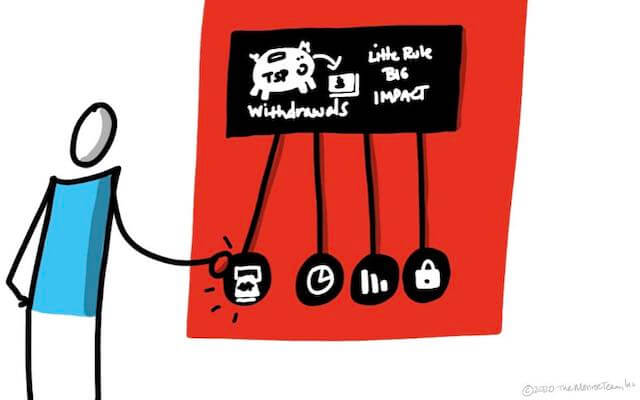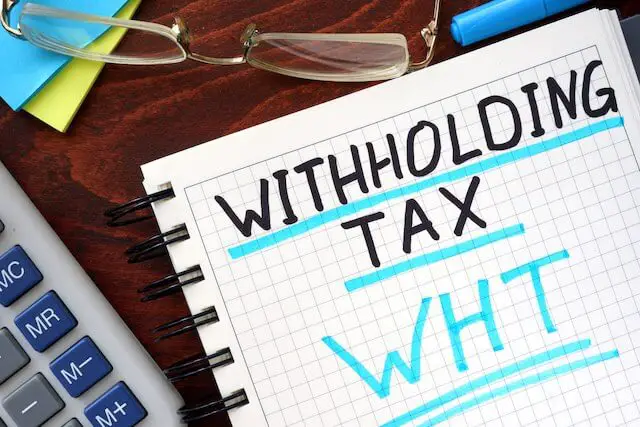There’s a small detail about Thrift Savings Plan (TSP) that needs more attention:
TSP does not let you select the funds to sell when you request a distribution.
This is a BIG deal. When you are retired and taking money out of TSP, if there are times of economic difficulty, losses in your account can get locked in. This is because you can’t choose which shares to sell—and which ones to hold onto in hopes of a market recovery.
Meet The TSP Retirement PivotTM
“Save, save, save.” That’s the name of the game while you’re working. But in retirement, there’s a change that takes place. It becomes: “Spend, spend—but also, don’t run out of money.”
The problem is that most people don’t know how or when to make this shift. We’ve named this shift The TSP Retirement PivotTM. Here’s a quick introduction:
WHO: The TSP Retirement PivotTM
WHAT: A point in time at which a TSP investor switches their strategy from investing during the savings phase (pure growth) to preparing for/living out the withdrawal stage (growth + preservation)
WHEN: It’s different for everybody, but employees typically begin considering it about 5-7 years before retirement
WHERE: This idea is centered around the funds in your Thrift Savings Plan (TSP) account but could apply to other retirement savings vehicles as well
WHY: Read further in this article for why it matters
HOW: Learn about how TSP works in retirement, paying special attention to the limitation on selling your investments to fund withdrawals that can lock in losses in your account during times of economic difficulties
Why It Matters
Withdrawals stress an account balance, but that’s what retirement savings are for: spending in retirement. Spending in retirement, however, is where the game is won or lost.
Whether your fund has gained or lost value, a SELL locks in the price of your shares, forever, for that amount.
TSP will need to SELL your shares in order to send your distribution in cash to your bank account. When you think about it, this service is mighty convenient since you can’t buy groceries with shares of the G, F, C, S, I, or L Funds.
The bummer part is that the shares can only be sold pro-rata, which means in equal proportions to the exact investments in your account. You cannot select which ones they sell. In normal circumstances, this standard approach can be just fine.
However, it’s in a down market (economic difficulties) where this can lead to major losses in the account that are more difficult to recover from.
For Example | Case Study
Let’s keep things simple and look at just two different funds: G Fund and C Fund.
Government Securities Fund (G Fund)
The G Fund never loses money. If the market goes down, or the market goes up, it doesn’t change. It operates independently and it will continue to grow at its declared interest rate, rain or shine. In other words, if the market is down one year, the G Fund stays the same. And then the market could come roaring back, and the G Fund will still remain the same.
Common Stock Fund (C Fund)
The C Fund can absolutely lose money, and gain it, too. If you want to know how the C Fund is doing, go to any reputable financial reporting site and look for the S&P 500 Index because the C Fund mirrors it (meaning the results are just about the same). Even when an account has sustained some losses in the C Fund, long-term investors know that the market moves in cycles. What ‘goes up must come down’, and vice-versa. As long as you still own the shares, when the market comes back up, you’ll be coming with it.
Selling Your Funds
You will no longer own your shares if you SELL them, which TSP will do for you when you request a distribution (a withdrawal from TSP deposited in cash in your bank account). A bit of each fund you own will be sold to cover your request. If you’ve had stock market losses, it’s locked in for that amount, because it’s coming out in a proportional mini version of your TSP account’s investments.
DIY Investor Dan
Meet DIY Investor Dan. Dan keeps a close eye on the stock market. He’s got a few outside investments as well. He doesn’t mind a riskier approach in hopes of getting those sweet, sweet C Fund returns.
Dan thought he had it all figured out. He wasn’t really considering slowing down on his investment risk as retirement approached. In the event that he had some losses in his C Fund in retirement (hey, it happens, it’s the stock market), he planned to instead sell only shares of his G Fund if he needed to take money out of TSP. That way, he could hang on to his C Fund shares for when the market recovers.
But fortunately, Dan learned that TSP does not let you select the funds to sell when you request a distribution. Dan made a conscious, deliberate decision to re-evaluate his investment strategy for any money that he decides to keep in TSP. Dan likes TSP a lot due to its low-cost structure, and he was grateful not to learn the hard way of this limitation.






